Winter is about to end when the snow starts to melt, and the sun lasts longer than usual. If you've been loyally using your snow blower for the past couple of months, you're probably thinking of leaving it outside—at least until you need them again. We were curious if this was a wise decision, so we researched this topic to find answers for you.
Generally speaking, yes, you can leave an electric snow blower outside. You simply have to store it in an elevated place, with the right coverings to protect it from the weather.
However, the best place to store your electric snow blower—summer or winter, is indoors, such as the garage.
Keeping the snow blower in the proper place helps it last for many wintery days. In this post, we'll discuss the best place to leave the snow blower in your home. We'll also discuss snow blower recommendations, so keep reading and enjoy this post!
Can I Leave Electric Snow Blower Outside?
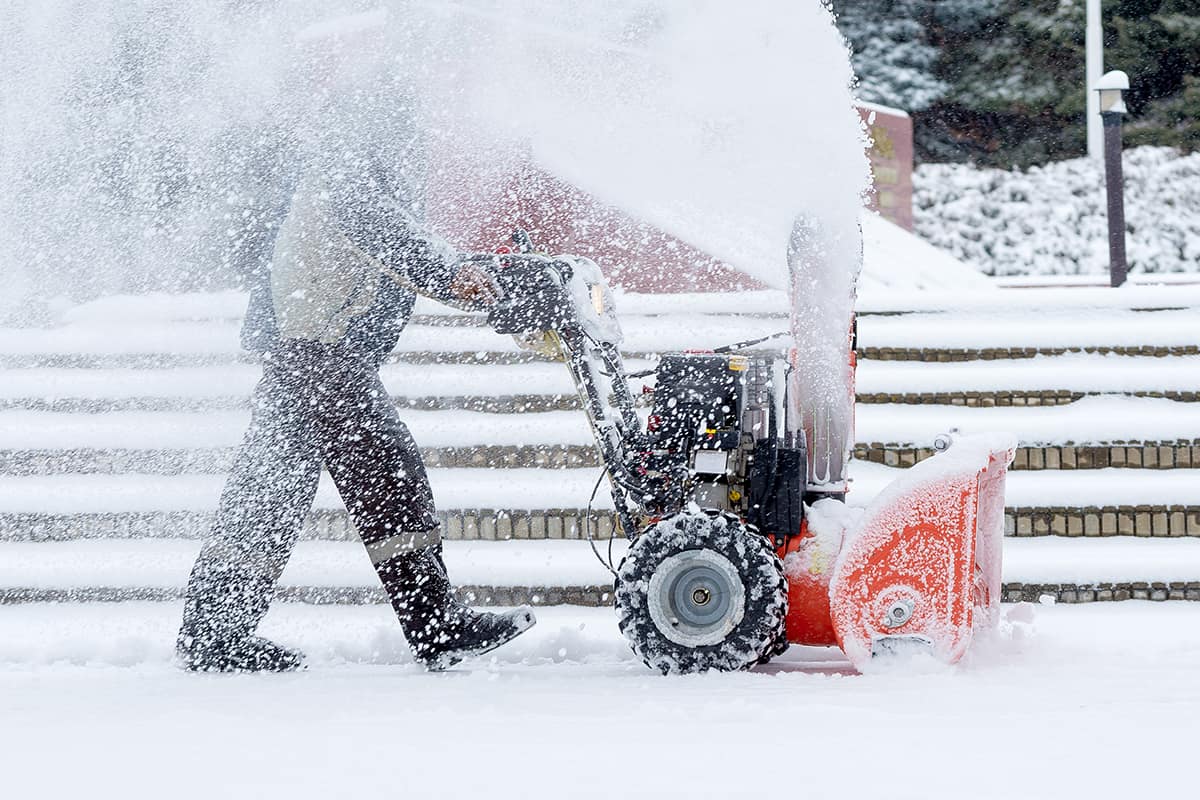
When the winter season rolls around, the leaf blowers are stored, and out comes the snow blowers. These machines are a godsend when the snow lays thick and heavy on the streets, blowing the snow off the ground.
They may be big and bulky, but snow blowers are one of the essential tools every house should have especially when it snows.
There are many different snow blowers available on the market today. Depending on where you live and how comfortable you are with the tool, you can get snow blowers that are electric, gas-operated, or cordless.
One of the many questions owners have when it comes to snow blowers is, "Can they leave the snow blower outside?" This is quite understandable because snow blowers tend to be big. They take up a lot of space, and they get used so much in the winter that it seems pointless to store them indoors.
The quick answer to this question is yes; you can leave the snow blower outside. However, the best place to keep the snow blower when not in use is still indoors to prevent anything from getting into the tool's mechanism. This applies to snow blower storage during winter or when spring rolls around.
If you are still planning to leave the snow blower outside, remember to elevate the snow blower from the ground. This is to prevent the snow blower from getting iced if it is sitting on the ground and prevent animals from damaging the machine.
Also, cover the snow blower with a heavy tarpaulin or snow blower cover to protect it from the elements.
Where Is The Best Place To Store A Snow Blower
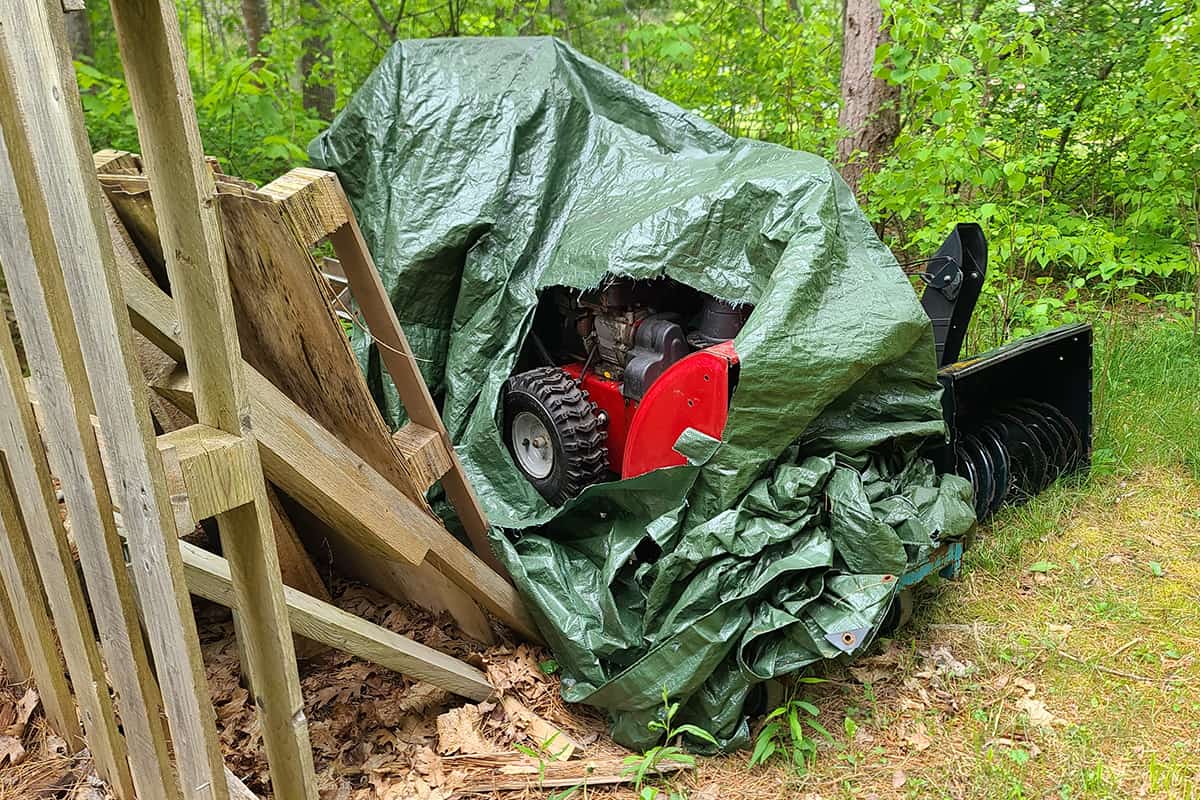
Ultimately, the best place to store a snow blower is indoors. Like many garden tools, snow blowers will last longer if they are stored securely and safely inside.
If you have a garage or a shed, your snow blower will be happy to stay there during its dormant time, and it'll be ready to go when the snow comes back.
If you don't have a garage or it's already overflowing with garden tools and other things car-related, there are other places to store a snow blower. You can also store the snow blower in the basement, where it can reside until the cold weather comes back.
Before you store your snow blower, it's important to do maintenance checks on the machine to address any issues. This will prevent problems from happening when winter comes around, and you don't have to worry about the snow piling up because the snow blower is broken.
Preparing the Snow Blower for Storage
- Don't forget to do a maintenance check on all the snow blower parts. Make sure that replacements are done ahead of time and not when you have to use the snow blower.
- Wash and dry the exterior of the machine. During winter, most tools and items may end up covered in salt, which can cause corrosion to the snow blower's body. Clean the snow blower to remove all traces of salt before storing them.
- Repaint or touch up any scuffed and scratched paint surface. The paint on the snow blower is meant to protect the metal underneath it (and also to make it look nice.)
- Do complete rust-proofing or rust-preventive maintenance on the snow blower. Since these machines are always in contact with water and salt, snow blowers are prone to rust. Apply a rust-preventative solution to the machine before storing it until next year.
- Loosen all the knobs of the snow blower to prevent the threads from sticking. It will be stored for an entire year, and usually, the knobs or screws of these garden tools tend to stick if they don't move. It will be easier for you to lubricate these parts when necessary because you've loosened them ahead of time.
- Always cover the snow blower. Some people may think that a cover is not necessary. However, covering the snow blower will keep the dust and other debris away from piling on top of the snow blower.
- You can use a heavy-duty tarpaulin to cover your snow blower in a pinch. If you can find one, it's always better to use a snow blower cover to make sure it covers your entire machine.
How Can I Protect Snow Blowers In Storage?
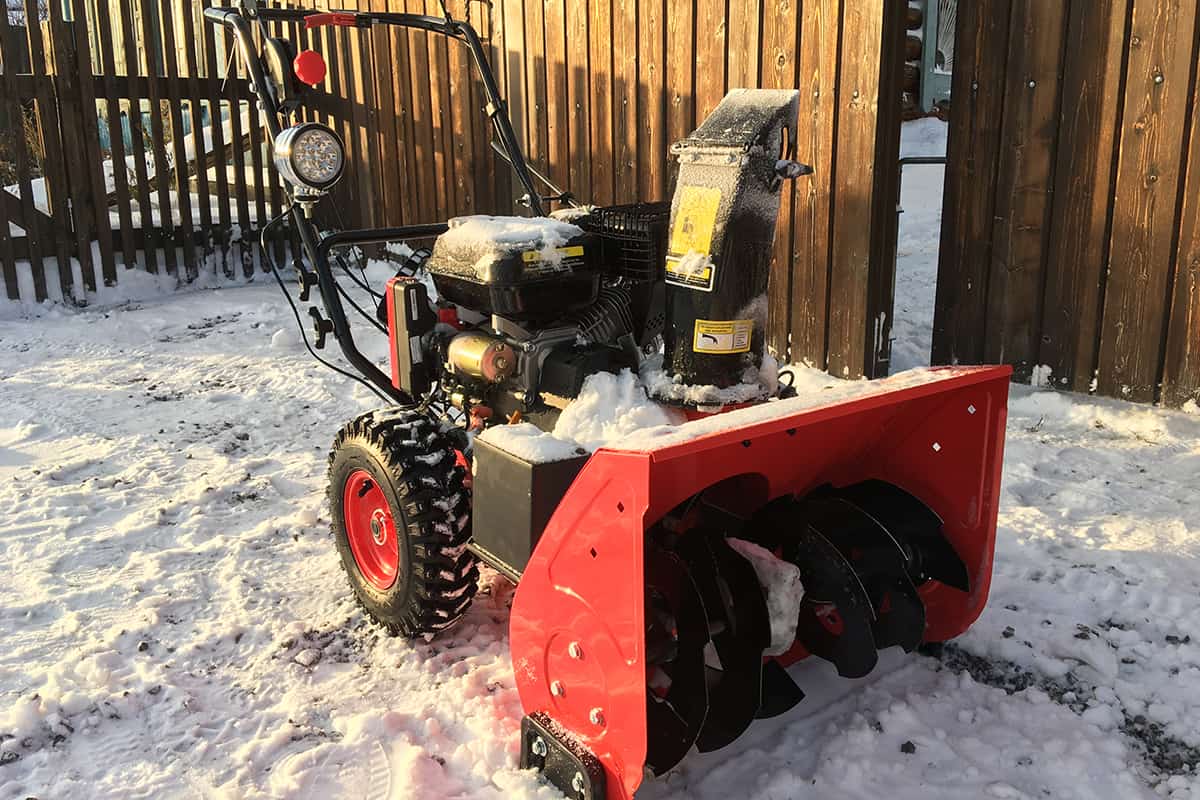
Regardless of where you store your snow blower, it is important to keep it covered. Keeping the snow blower under a protective cover will prevent dust and snow from building up on the machine when it is not in use.
Check out this snow blower cover on Amazon.
The best way to protect your snow blower is to cover it with a high-quality snow blower cover. These snow blower covers are water-resistant and they will also protect your machine from UV rays.
Get this heavy-duty tarpaulin on Amazon.
For a more practical approach, you can also use a heavy-duty tarpaulin to cover your snow blower. They are also water- and UV-resistant, and you can use them for other purposes when you don't have to cover your snow blower.
Best Snow Blowers To Use
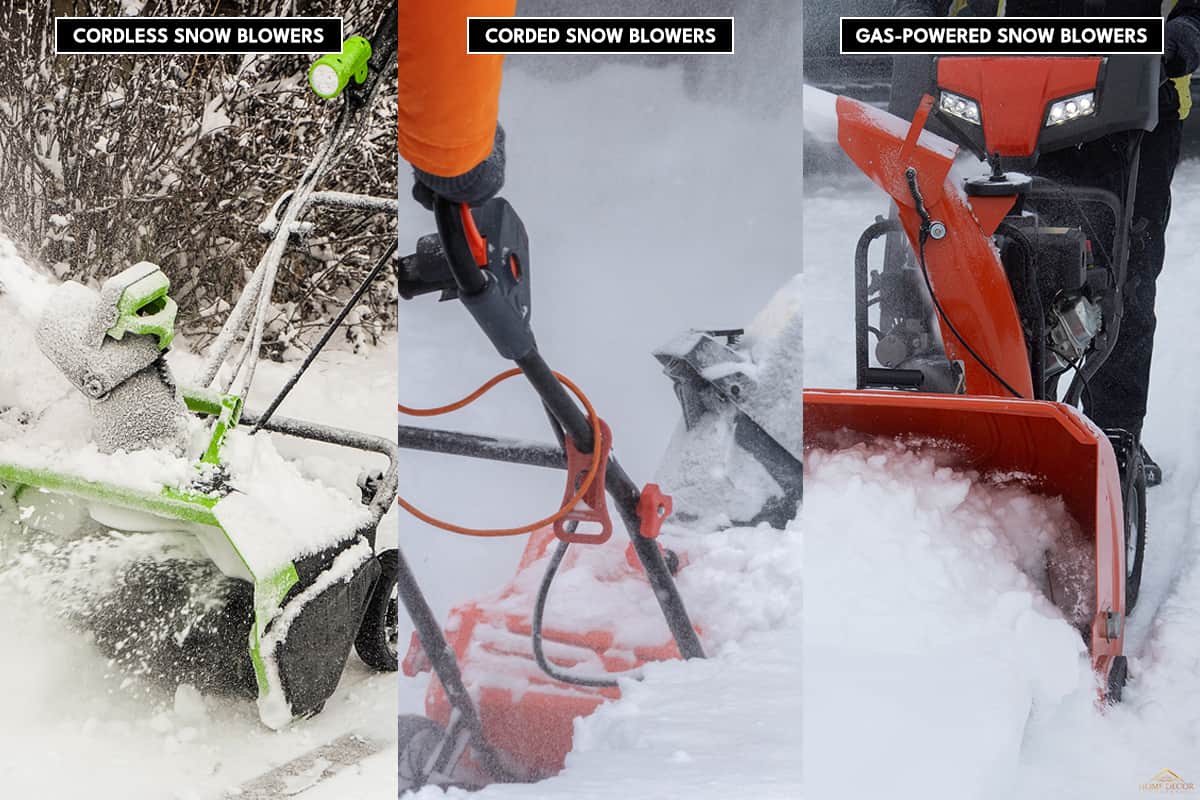
If you are in the market for a new snow blower, you might be overwhelmed with the number of choices. The kind of snow blower to use generally depends on how big the area needs to be cleared.
If you are working with a big space like a yard, you will need a snow blower with more power.
Cordless snow blowers
Check out these cordless snow blowers on Amazon.
One of the most convenient snow blowers available on the market is a cordless snow blower. This gives users the freedom to move around with the snow blower without worrying about the limitations of an electric cord.
However, one problem with cordless snow blowers is their dependence on batteries. They tend to run out faster if there is a lot of snow to work with.
Fortunately, most of these cordless snow blowers can clear up to 14 tons of snow in one charge.
Get this rapid-charge cordless snow blower on Amazon.
For people who don't have the patience to charge their batteries or they simply forgot to do so, this rapid-charge snow blower will be perfect.
These snow blowers can throw snow up to 35 feet away. They can also clear 8 inches of snow in one pass. Despite this power, this snow blower is pretty compact, and you can easily store them when summer rolls around.
Corded snow blowers
Grab this corded snow blower on Amazon.
If you want a more traditional electric snow blower, these corded ones by WEN are great for many homes. It can clear up to 490 lbs of snow in a minute, so that will cut the time you need to work on clearing the driveway.
The only disadvantage with corded snow blowers is the limitations on distance. You won't be able to move to areas the cord cannot reach.
Gas-powered snow blowers
See this gas-powered snow blower on Amazon.
For big, wide spaces, a standard corded or even a cordless snow blower will have a hard time clearing all that snow. This job requires heavy power, and you'll need a high-quality gas snow blower to do this job.
This PowerSmart snow blower has a strong engine that can clear up to 12 inches and 2,400 lbs of snow in a minute.
Wrapping Things Up
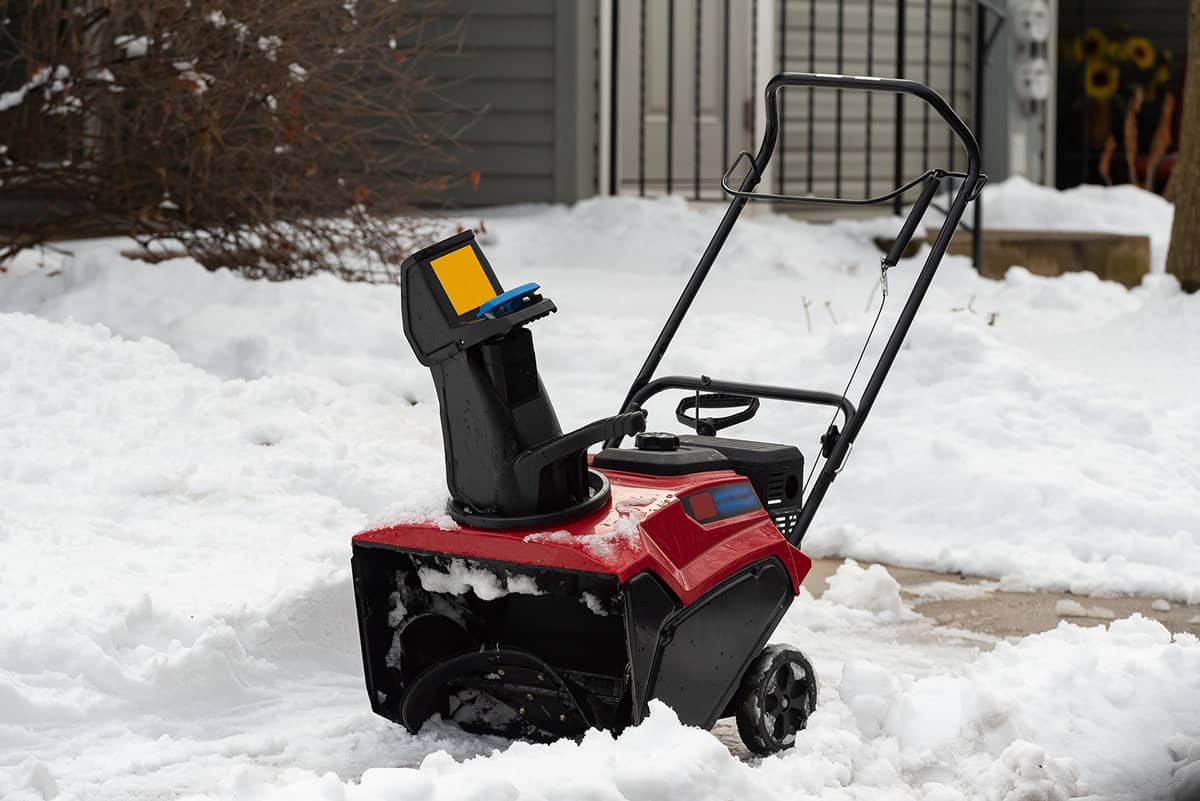
Nothing is more exciting than seeing the snow blower ready for storage until the next year. To keep these machines working well until the next winter, it's always best to store them in the proper place.
While snow blowers can be left outside, always remember that the outside elements can wreak havoc on machines, so it's best to keep them safe indoors.
Would you like to know more about other garden tools you might need for your home? We have a few articles that might interest you:
How To Start A Kobalt Electric Mower [Step By Step Guide]
How To Attach A Bag To A Black & Decker Leaf Blower [Quickly & Easily]






